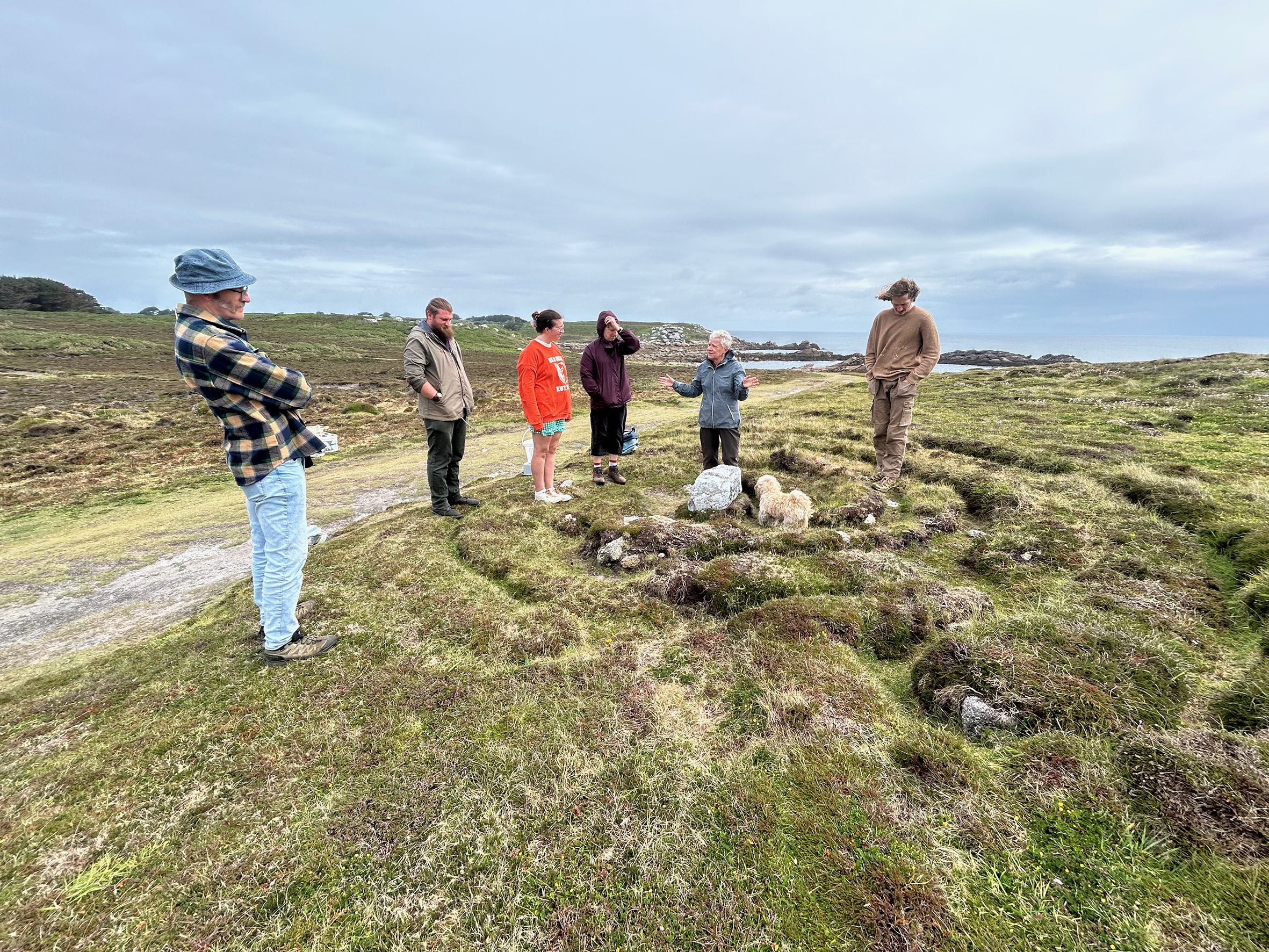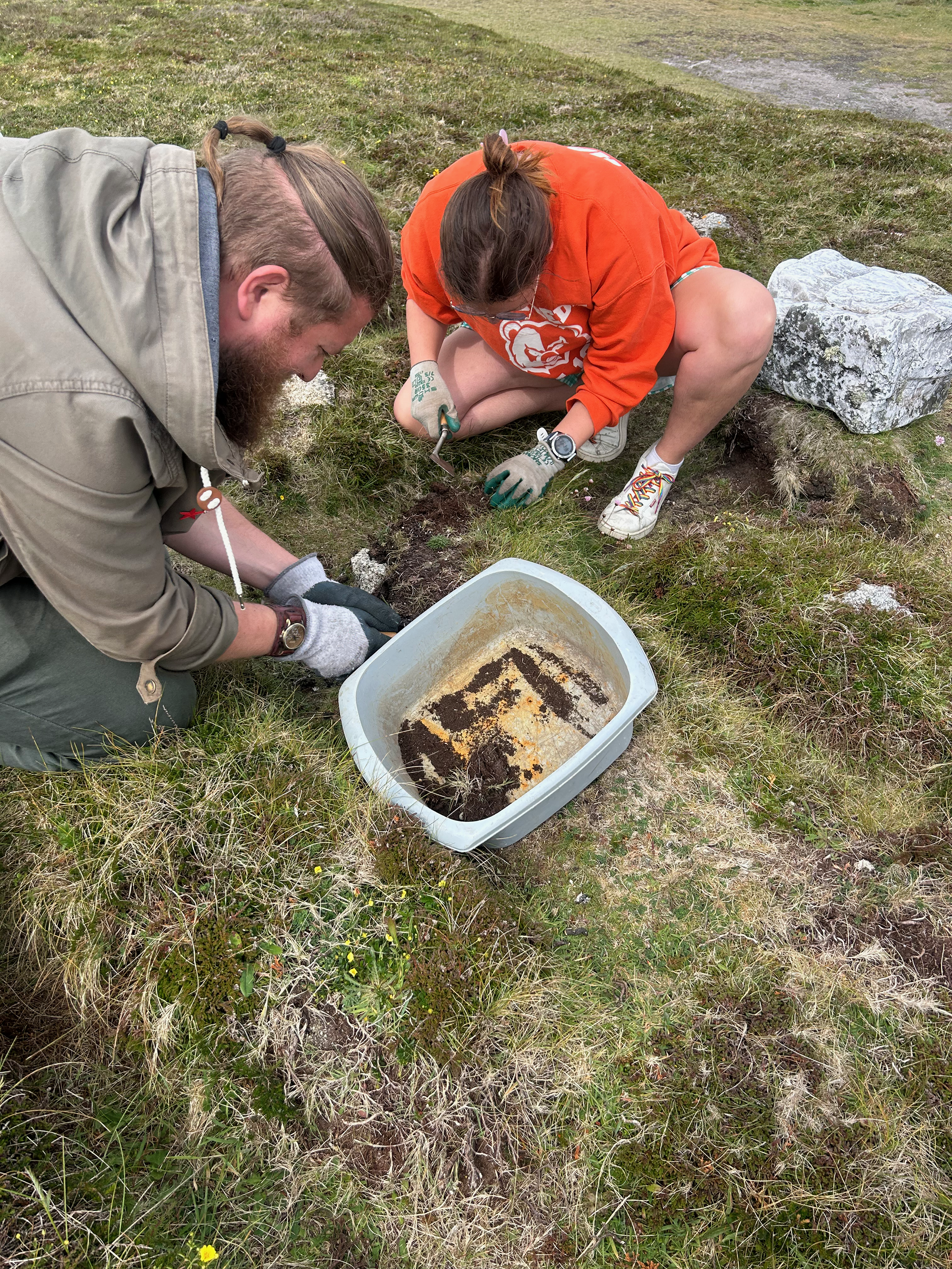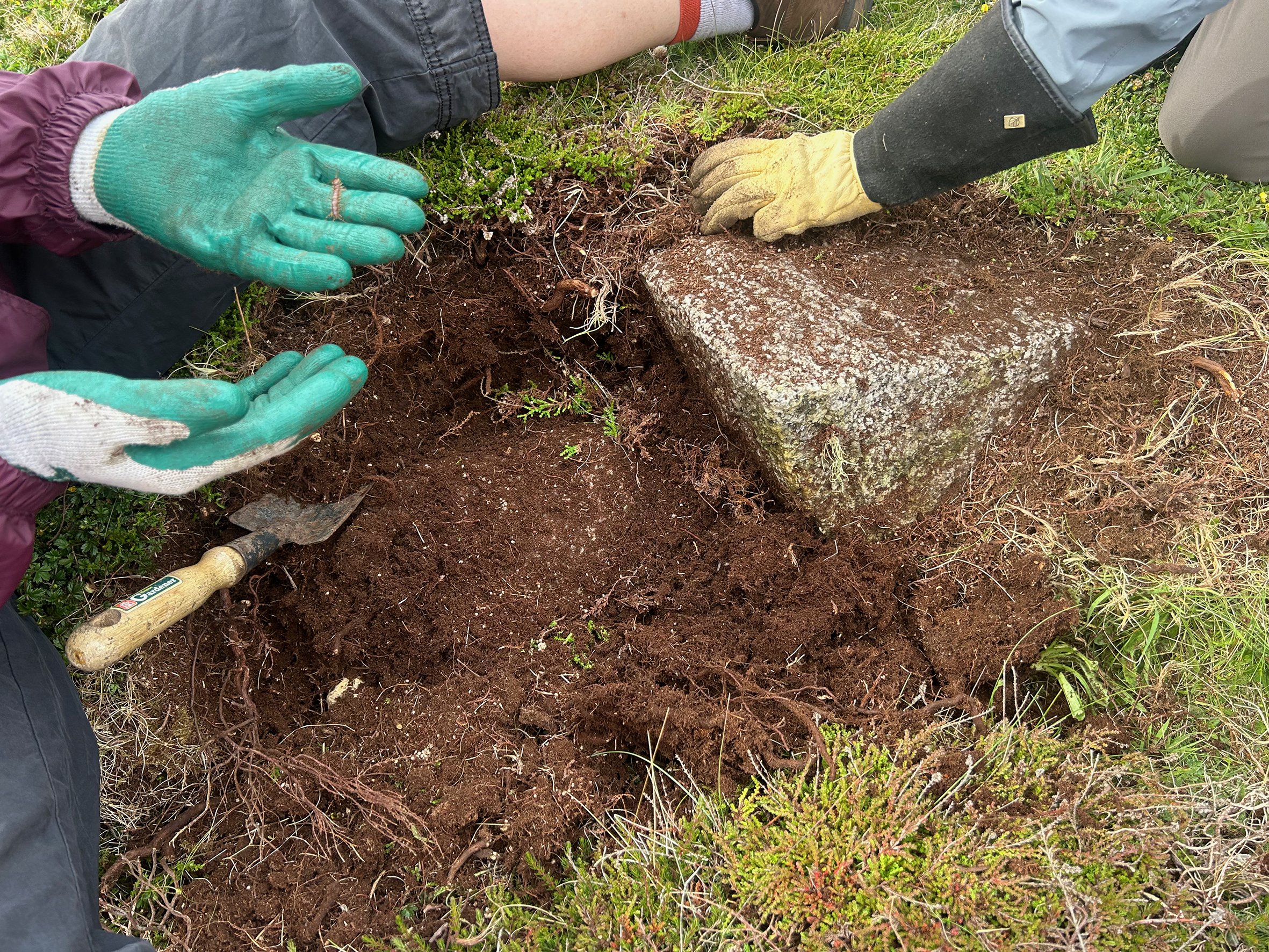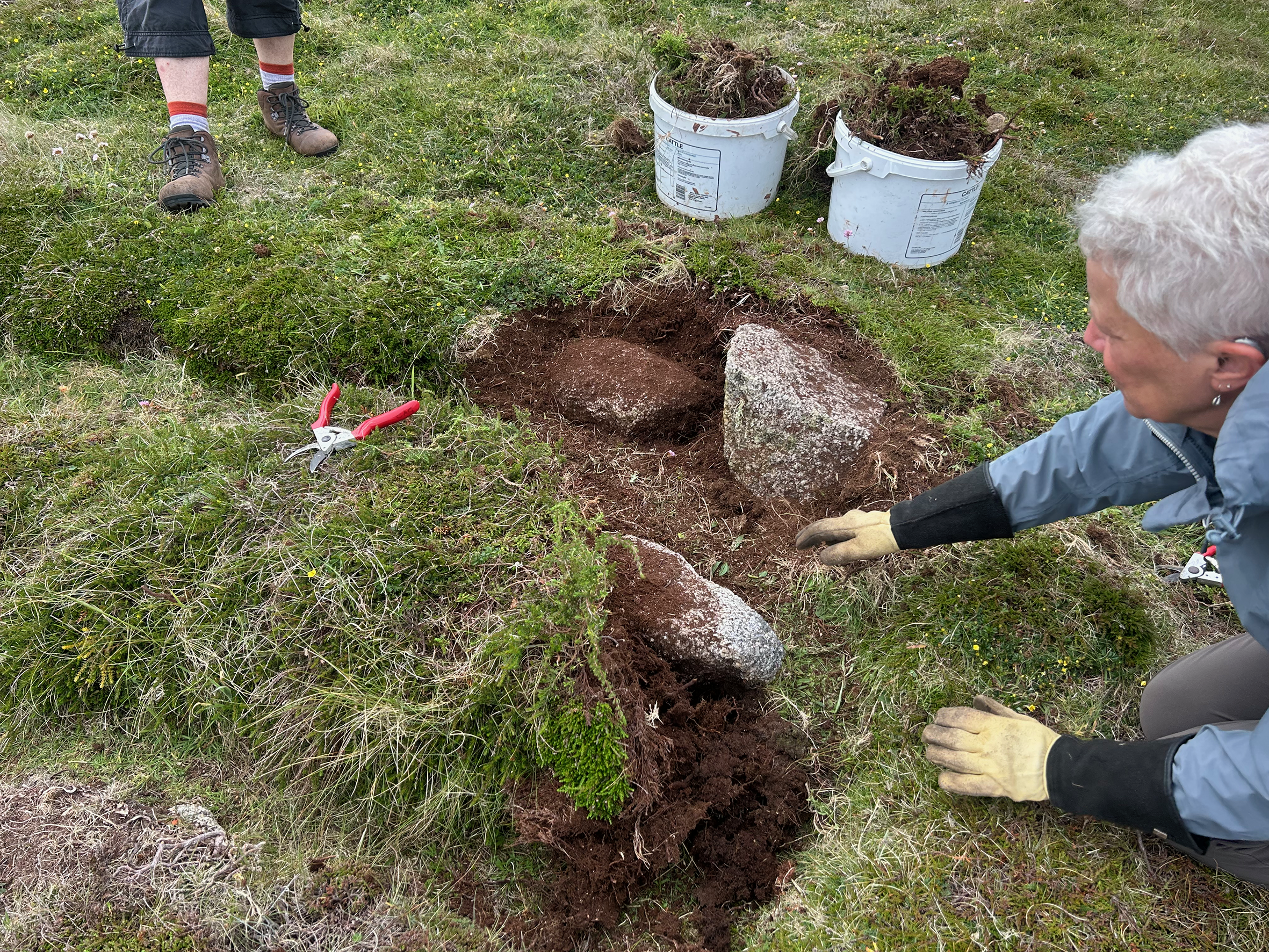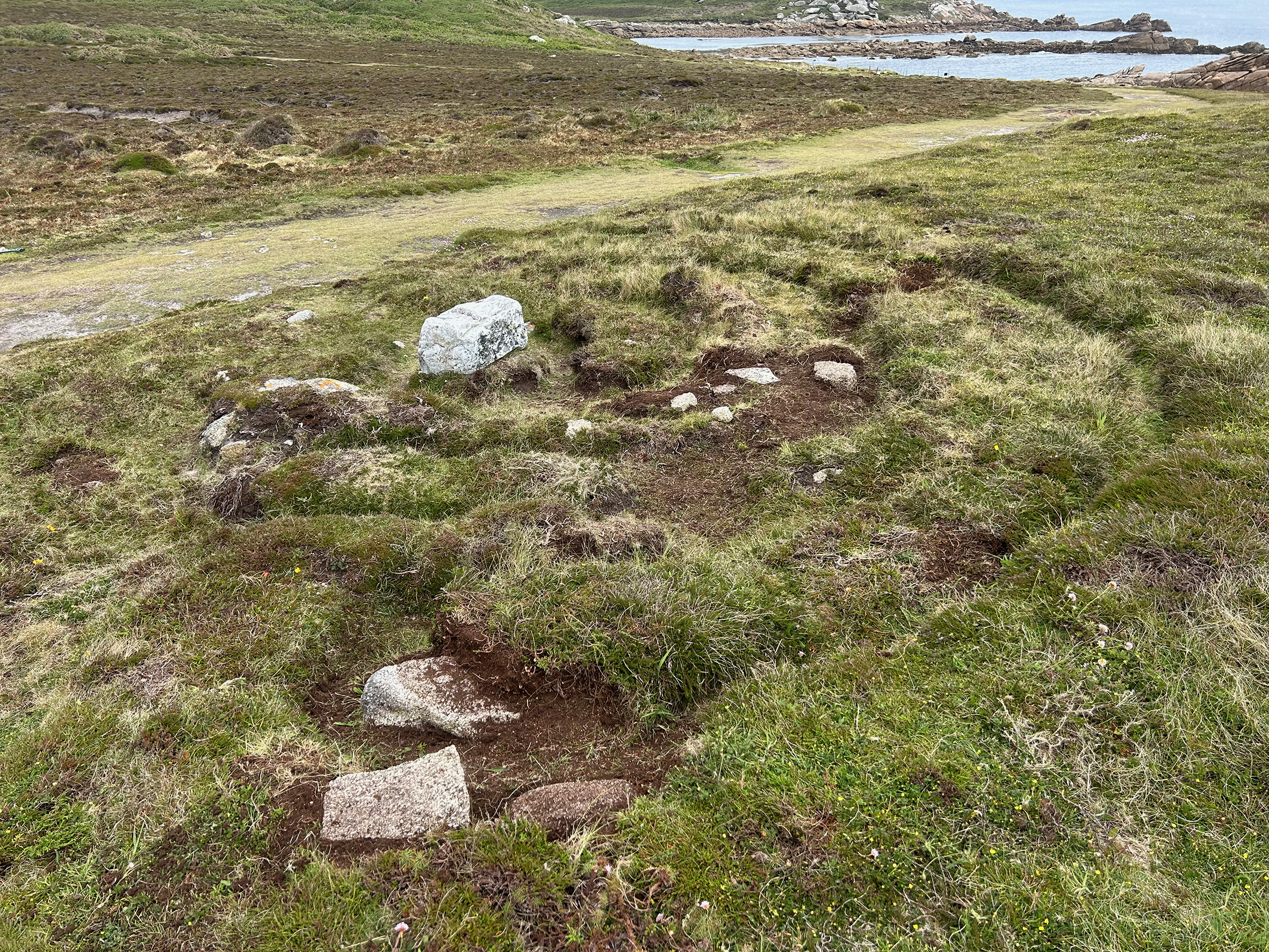Test Excavation of Giant’s Castle Maze
We recently undertook a test excavation at Giant’s Castle maze with a small team of volunteers in order to better understand how the maze was constructed. We were guided in this work by local archaeologist Katharine Sawyer - who was advising on the archaeology - and CEO of the Isles of Scilly Wildlife Trust, Julian Branscombe - who was advising on the ecology.
Our aims were to understand:
Whether the maze was made of dry stone walls inside the turf;
Whether removing the turf would damage the stone construction inside;
Whether the stones inside the walls would reveal the maze’s original path configuration;
Whether there were any rare plants or animals at the site which we would need to protect.
These results from today will guide us in the full restoration of the maze, which will be happening on Saturday 14th and Sunday 15th June - and everyone is welcome to come and join us.
Local archaeologist Katharine Sawyer briefing our team on the best approach to the test excavation.
Head of the Isles of Scilly Wildlife Trust, Julian Brandscome, discussed the impact on the natural landscape of this kind of excavation work.
We began removing turn from four areas of the maze which looked quite varied in construction, in order to understand what the construction of the maze was like underneath.
We removed the top layer of heather…
…and began to scrape away the peat.
Julian kept a record of the plants that are growing at the site, and concluded that these are - as he expected - all typical coastal heathland plants. As this area of St Mary’s has an abundance of coastal heathland, it was decided that restoring the maze would not negatively impact the ecology in the area. Disturbance in the ground could in fact create more diversity of plant life, as new seeds take route in the recently broken soil.
Julian helping us to identify any plants we found…
…as well as any animals, like this centipede.
We were surprised to find that, while some of the maze banks - as expected - were constructed of stones under the peat and were clearly marking the edges of the paths, many of the other banks were almost entirely free from stones. It became evident that, while the site must have once been a maze constructed of stones placed on turf, many of the stones had moved so much since the original construction that the current paths and banks bore almost no resemblance to the pattern of stones inside them. Instead, the action of walking had carved the paths deeper into the peat, while the peat and vegetation grew higher over the unwalked banks. In short: the current maze has been built as much (if not more) by the passage of walkers’ feet as it was by the original maze builders.
Some of the maze banks had large stones delineating the path.
Whereas some of the maze banks contained hardly any stones and were instead shaped by from foot-worn peat.
This discovery raised an interesting question for us:
“Which maze do we restore? The maze that was built in the 1950s or the one that was made by the feet of the people who have been walking it since then?”
Volunteers clearing turf from the maze banks.
Our team - including Dippy the Dog - at work on the excavation.
In the years since its construction the maze has become a true and enduring collaboration between people and landscape. This discovery has changed the shape of our plans. Rather than doing a traditional restoration of an earlier maze design, as we first imagined, we feel that it is important to honour the maze that has been created by the passage of walker’s feet, as much as any original design that was created here.
The maze now with the stones exposed from our excavation.
Based on our findings, we are currently creating a restoration plan for Giant’s Castle Maze that will:
Be an enduring shape that is clear and easy to walk for generations to come
Honour the role that people who have walked the maze have played in shaping its current paths
Also honour the intentions of the original maze makers
Restore it to a working maze again that people can enjoy for years so come.
The restoration will take place on the weekend of the 14th and 15th June - please come and be part of it if you would like to.

